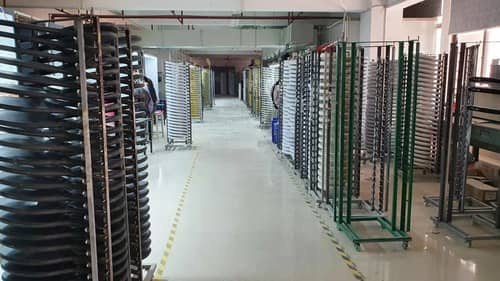Beach tennis, also known as beach paddleball, is one of the most fun beach sports. It is a relatively new game that mixes tennis and volleyball with some parts of badminton. To start the sport you will need a beach tennis racket and a low compression tennis ball.
When choosing a beach tennis racket, you should mainly consider the weight, length, balance and head size of the racket. In addition, the right racket you should get will depend on the level of your game.
Manufacturers offer special rackets at different prices. If you are a beginner, we recommend that you choose an inexpensive one when trying out the sport. If you are an intermediate or advanced golfer, you can choose a more fancy racquet starting at about $50 and going up to $200 or more, depending on the quality.
Two important factors: weight and length
The two most important factors to consider are the weight and length of the paddle.
A long and heavy paddle will provide more power and is therefore suitable for playing at the back of the court. Lighter and shorter paddles are perfect for playing in the front of the court because they offer excellent maneuverability and control of the ball. Keep this in mind, especially if you plan to play mostly doubles.
Make sure you choose a racquet that is light enough so you can hit the ball comfortably, but heavy enough to make a powerful swing.
Quality beach tennis racket quality
Weight
A lighter racket allows you to handle the racket quickly so you can hit the ball effectively. However, a heavier racquet will provide more power when hitting the ball than a heavier racquet, so a lighter racquet requires more effort from your arm.
For the best experience, choose the racquet with the maximum weight you can handle.
Beach tennis rackets range in weight from 320 grams to 360 grams. The weight of your racket will definitely affect how you feel about the ball. Heavy rackets are stiff, stable and more powerful. They also transmit less vibration to your hands during impact. Consider the combination of balance and weight when buying.

Balance
If the racquet is heavier at the head, you will be able to exert more power with each stroke, especially when snapping the ball. However, such a racquet will bear more strongly on your wrist. On the other hand, if the racquet is balanced closer to its handle, it will allow you to control the ball more precisely and with more ease on your wrist.
Surface
Most beach tennis rackets have small grains and a smooth surface. If you are looking for a racket that offers high control, you should choose a racket with a rough surface.
Materials
The materials a manufacturer uses to build a racquet are as important as the racquet itself. The material of construction also affects the characteristics of the racquet, such as weight, flexibility and stiffness.
Most manufacturers use graphite, fiberglass, Kevlar, etc. as the outer material. The inner material is usually hardened foam, which plays an important role in the racquet’s hitting power and flexibility.
Head size
It is usually recommended to use a racket with an average head size width. Please remember that beach tennis rackets should meet the head size requirements set by the ITF.
It is also recommended that you use racquets with rounded edges as they are easier to control and play with.
Length
The ITF requires a maximum length of 19.6 inches (50 cm) for beach tennis rackets.
When it comes to length, a longer racquet will give you a significant advantage on the serve because it offers a longer reach and a larger contact surface. Conversely, a shorter racquet is usually more balanced and easier to handle. If power is not your strong suit, we suggest you choose a shorter racquet.
Flexibility
The flexibility, flexibility and strength of a racket depend greatly on the material used to make the racket head as well as the surface.
Typically, a more flexible racquet provides more power at impact; however, the downside is that it reduces ball control. Conversely, stiffer racquets absorb more energy at contact, making them easier to place and direct the ball.

Tips for taking care of your beach tennis racket
- After the match, clean the surface of the racket by wiping away the sand with warm water and a towel; dry it immediately.
- Do not submerge it in water.
- Do not expose it to extreme temperatures.
- Do not leave your racket in the hot sun when you are not playing.
- Try not to abuse your racquet in any way – don’t throw it away or pound it.
- Always use a new grip to prevent your racquet from slipping and flying out – Replace worn grips with new ones.
- Store it in a safe place – have a protective cover or bag with a zipper.
